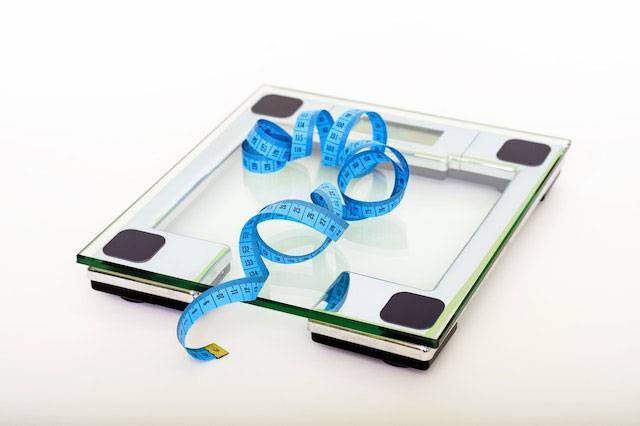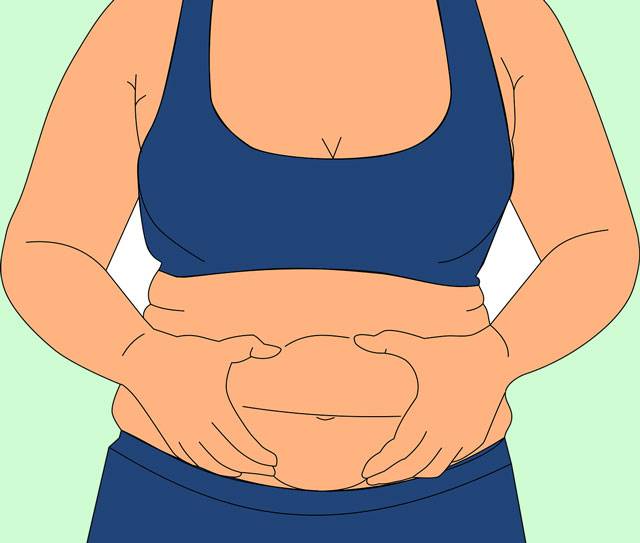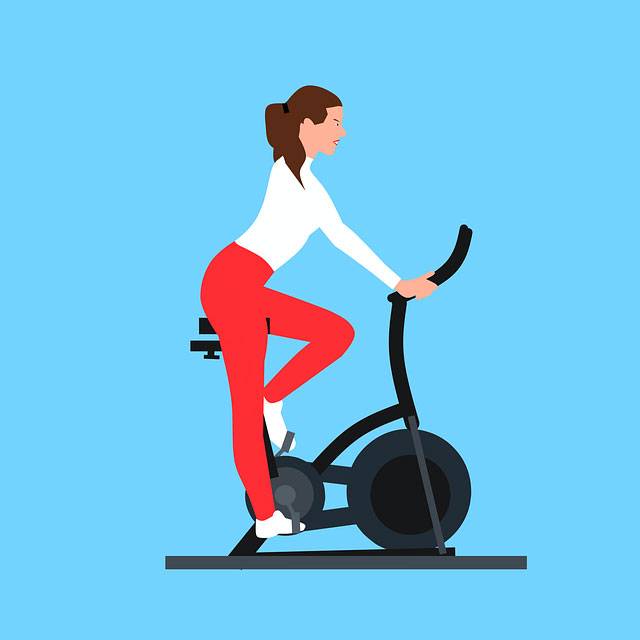
Energy balance in weight loss refers to the relationship between the energy intake (calories eaten) and energy expenditure (calories burned through metabolism and physical activity).
The energy balance is a fundamental concept in nutrition for weight gain, weight loss and also plays a critical role in maintaining body weight.
Regardless of what the diet is (for example, Keto, fasting, Paleo, fad diets, low carb, etc.) for weight loss to happen the energy balance must be in a negative energy state. (Calorie deficit.)
Another way to look at the energy balance is to think about calories in, versus calories out. (C.I.C.O.)
See also – What Is CICO For Weight Loss?
Food and drink consumed are energy. Calories are just a measurement of energy.
What Are The 3 Types Of Energy Balance?
There are three possible states of energy balance:
- Positive Energy Balance:
This occurs when a person consumes more calories than they expend. The excess energy is stored in the body as fat, leading to weight gain over time. Positive energy balance is the primary cause of obesity.
- Negative Energy Balance:
This happens when a person consumes fewer calories than they expend. The body compensates for the energy deficit by breaking down stored fat and other tissues, resulting in weight loss. Negative energy balance is essential for losing weight.
- Neutral Energy Balance:
This state occurs when energy intake equals energy expenditure. In this case, there is no net weight gain or loss, and the body maintains its current weight.

Total Daily Energy Expenditure
Energy balance is influenced by various factors, including:
- Basal Metabolic Rate (BMR): The number of calories your body needs to maintain basic physiological functions while at rest, such as breathing, maintaining body temperature, and supporting organ functions.
- Physical Activity: The number of calories burned through physical activities and exercise.
- Thermic Effect of Food (TEF): The energy expended to digest, absorb, and metabolize the nutrients from the food you eat.
- Non-Exercise Activity Thermogenesis (NEAT): The calories burned through daily activities like walking, standing, fidgeting, and other unconscious movements.
Maintaining a healthy energy balance is crucial for overall well-being.
Positive energy balance can lead to weight gain and obesity, increasing the risk of various health problems.
On the other hand, prolonged negative energy balance can lead to malnutrition and other health issues. A diet that restricts food groups can lead to health problems.
This is a good reason why your diet should include a variety of foods like: wholegrains, fruits and vegetables, lean meats, healthy fats and dairy, etc.
Does Energy Balance Work For Weight Loss?
Yes, energy balance is an effective and fundamental approach for weight loss.
When you create a calorie deficit by consuming fewer calories than your body burns, you will lose weight over time. By maintaining a negative energy balance, your body taps into its energy reserves, primarily stored fat, to meet its energy needs, resulting in weight loss.
However, it’s essential to remember that weight loss is a gradual process, and sustainable results come from consistent and balanced efforts in managing your calorie intake and energy expenditure.
You also might be interested in reading – Why Doesn’t Energy Balance Work In Weight Loss?
What are the main components of energy balance?
The main components of energy balance are energy intake (calories consumed through food and beverages) and energy expenditure (calories burned through metabolism and physical activity).
What factors affect energy balance?
Several factors can affect energy balance, including age, gender, body composition, physical activity level, metabolic rate, and the types of food and beverages consumed.
How does energy balance impact performance?
Energy balance plays a significant role in athletic and overall performance. Maintaining an appropriate balance ensures adequate energy for physical activities and optimal body functions.
This is why it is hard to exercise when you are on a very low calorie diet.
Why is balancing energy input and output important?
Balancing energy input and output is crucial for weight management and overall health. It helps prevent weight gain (positive balance) or weight loss (negative balance) and supports a healthy body composition.
How To Track Energy Balance In Weight Loss
Tracking energy balance for weight loss involves monitoring the calories you consume (energy intake) and the calories you burn (energy expenditure).
Tracking calories is not for everyone, especially for long term. It also isn’t one hundred percent accurate. But it is good to be aware of what foods have what calories.
A little bit of education in nutrition goes a long way in to realizing that weight loss is possible and why diets can work. So tracking calories initially and learning about nutrition is a great start.
However, we generally don’t suggest tracking energy expenditure, or energy out. As it is very hard to track accurately.
Here are some steps to help you effectively track energy balance:
- Calculate your Total Daily Energy Expenditure (TDEE): Use an online TDEE calculator to estimate the number of calories your body needs to maintain its current weight based on your age, gender, weight, height, and activity level.
- Set a Calorie Target: Determine the number of calories you want to consume daily to create a calorie deficit. To lose weight, aim to consume fewer calories than your TDEE, but avoid extreme restrictions that may harm your health.
- Use a Food Diary or App: Keep a record of all the foods and beverages you consume throughout the day, along with their respective portion sizes. There are various mobile apps and online tools available that make calorie tracking more manageable. My Fitness Pal seems a popular app and our personal trainers use it.
- Monitor Macronutrients: Pay attention to the macronutrient composition of your diet, including proteins, carbohydrates, and fats. Each macronutrient has a different caloric value per gram, so tracking them can help you maintain a balanced diet. Protein helps maintain muscle for weight loss and helps you feel fuller.
- Track Physical Activity: (Optional. As it may not be accurate.) Use a fitness tracker or app to monitor your daily physical activities and exercise routines. It will help you roughly estimate the calories burned during different activities.
- Calculate Caloric Expenditure: (Optional.) You can estimate your daily caloric expenditure by combining your basal metabolic rate (BMR) with the calories burned through physical activities. (Tracking calories burnt is generally not accurate.) Subtract this from your daily calorie intake to see if you are in a calorie deficit or surplus.
- Be Consistent: To get accurate results, be consistent with your tracking of food consumed and avoid underestimating portion sizes or neglecting certain foods.
- Adjust as Needed: Regularly reassess your progress and make adjustments to your calorie intake and activity levels if needed. As you lose weight, your TDEE may change, so it’s essential to adapt your plan accordingly.
- Stay Mindful: Pay attention to hunger cues, and listen to your body. Weight loss is not just about numbers; it’s about overall health and well-being.
Remember, weight loss is a gradual process, and it’s essential to focus on sustainable and healthy habits rather than quick fixes or extreme restrictions.
Why Doesn’t Energy Balance Work In Weight Loss?
A negative energy balance in weight loss does work. But there could be several reasons that it doesn’t appear to work.
Like underestimating the calories the person consumes. Large portion sizes and high calorie foods (Like an up-size burger meal) or constant snacking can be just some of the issues that puts the person in a positive energy balance.
You might be interested in this article – Bad Habits For Weight Loss To Be Aware Of
How does energy balance contribute to obesity?
Positive energy balance, where calorie intake exceeds expenditure, can lead to weight gain and contribute to obesity over time.
What is energy balance in simple words?

Energy balance in simple words means matching the calories you consume through food and drinks with the calories your body uses for daily activities and metabolism.
What are the 3 types of energy balance?
The three types of energy balance are positive energy balance (caloric surplus), negative energy balance (caloric deficit), and neutral energy balance (caloric intake equals expenditure).
What is the energy balance method?
The energy balance method is a way to estimate energy intake and expenditure by calculating the calories consumed and burned over a specific period.
What is the relationship between food intake and energy balance?
The relationship between food intake and energy balance determines whether there is a caloric surplus, deficit, or balance, which impacts changes in body weight.
What regulates energy balance?
Energy balance is regulated by complex mechanisms involving hormones, the central nervous system, and metabolic processes that respond to changes in food intake and physical activity.
What is the energy balance and metabolism?
Energy balance and metabolism are interconnected processes where energy intake is utilized through metabolic reactions to maintain bodily functions and support physical activities.
What is energy balance and body composition?
Energy balance and body composition refer to the relationship between the calories consumed and expended, influencing changes in body weight, muscle mass, and fat mass.
Conclusion
To achieve a healthy energy balance, it is essential to balance calorie intake with energy expenditure. This can be achieved through a combination of a balanced and nutritious diet, regular physical activity, and adopting a healthy lifestyle.
For losing weight you have to be in a negative energy balance or calorie deficit for the diet to work.
Resources, Information And Further Reading
How To Convert Calories To Kilojoules
Fat Loss Forever, How To Lose Fat and Keep It Off. By Peter Baker and Layne Norton PH.D
Burn The Fat Feed The Muscle. By Tom Venuto.
The Renaissance Diet, A Scientific Approach to Getting Leaner and Building Muscle. By Dr. Mike Israetel, with Dr. Jen Case and Dr. James Hoffman.
The Muscle and Strength Nutrition Pyramid. By Eric Helms.
Specialist in Fitness Nutrition. John Berardi, PH.D and Ryan Andrews, MS/MA, RD.
The Fast Diet. Dr Michael Mosley and Mimi Spencer.
The Ultimate Volumetrics Diet. By Barbara Rolls, Ph.D. with Mandy Herman, R.D.




